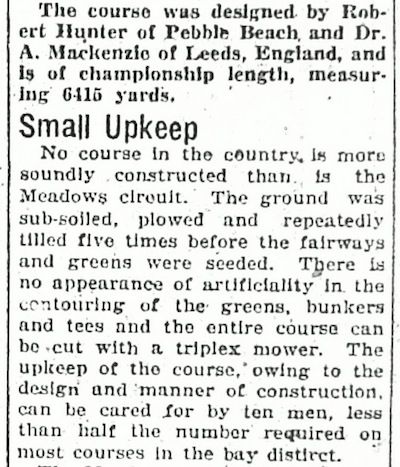I’ve often heard it referred to as the “split-cut” or “loop-mow."
It is a tremendous time saver for the maintenance staff as long as the turf is dry enough not to clump up in the reels. Also, it can be handy for the golfer who isn’t familiar with a course, as the center line works as a natural target…and much better looking than barber poles if you ask me. The ironic thing is that most of the courses I know of that use the split-cut are private. I think it’s one of those things that’s starting to become trendy again amongst upper-echelon clubs. The only public courses I can think of that are NOT striped have very few noticeable lines at all, a feat that may be the toughest of all for any greenkeeper to achieve. There’s truly an art to it.
Mowing lines and patterns are rarely discussed even though they can significantly affect the way a golfer plays a course. Discussed perhaps even less frequently is the connection between course layout (design) and course management (maintenance). For instance, the design and placement of hazards and the configuration of green complexes directly affect the way a course is maintained -- man hours, equipments costs, etc.
I know it doesn’t sound diplomatic this day and age, but I’d rather have more short grass and fewer machines and operators. Almost never does inflating an industry stimulate the masses. And in the case of the golf business it’s had the opposite effect. It’s no wonder the cheapest courses to play usually have the smallest crews and simplest operations. Sooner or later the golf industry will have to confront the rising cost of labor in addition to water.
In recent decades how often has an architect had the foresight to build a course thinking specifically about the maintenance regimen that will follow? Mackenzie talked a lot about this idea, even before the depression, but even more during it. Post ’29 crash is when he really started to put his preachings into practice.
Design...maintenance…cost of play…speed of play -- they’re all tied together.
